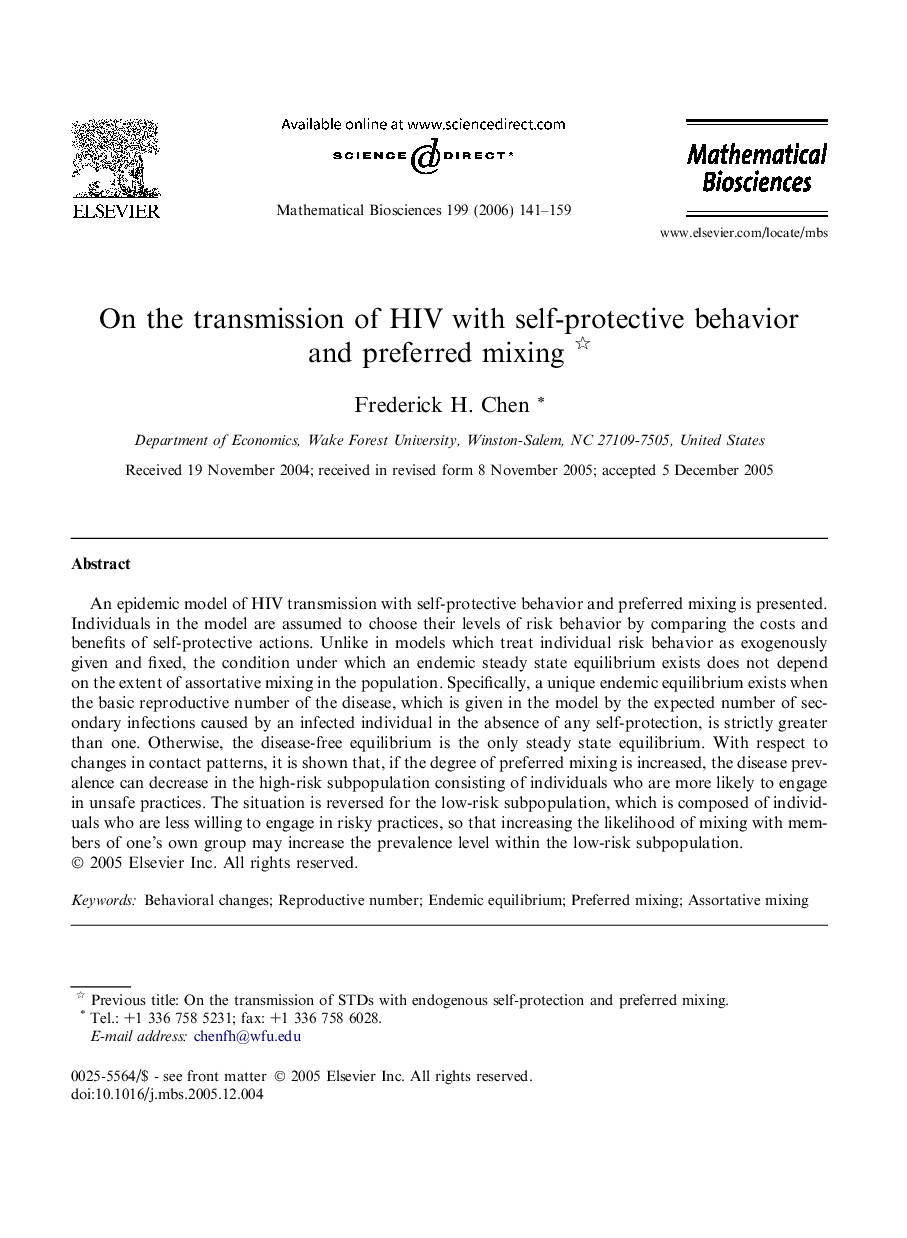| کد مقاله | کد نشریه | سال انتشار | مقاله انگلیسی | نسخه تمام متن |
|---|---|---|---|---|
| 4501221 | 1320055 | 2006 | 19 صفحه PDF | دانلود رایگان |

An epidemic model of HIV transmission with self-protective behavior and preferred mixing is presented. Individuals in the model are assumed to choose their levels of risk behavior by comparing the costs and benefits of self-protective actions. Unlike in models which treat individual risk behavior as exogenously given and fixed, the condition under which an endemic steady state equilibrium exists does not depend on the extent of assortative mixing in the population. Specifically, a unique endemic equilibrium exists when the basic reproductive number of the disease, which is given in the model by the expected number of secondary infections caused by an infected individual in the absence of any self-protection, is strictly greater than one. Otherwise, the disease-free equilibrium is the only steady state equilibrium. With respect to changes in contact patterns, it is shown that, if the degree of preferred mixing is increased, the disease prevalence can decrease in the high-risk subpopulation consisting of individuals who are more likely to engage in unsafe practices. The situation is reversed for the low-risk subpopulation, which is composed of individuals who are less willing to engage in risky practices, so that increasing the likelihood of mixing with members of one’s own group may increase the prevalence level within the low-risk subpopulation.
Journal: Mathematical Biosciences - Volume 199, Issue 2, February 2006, Pages 141–159